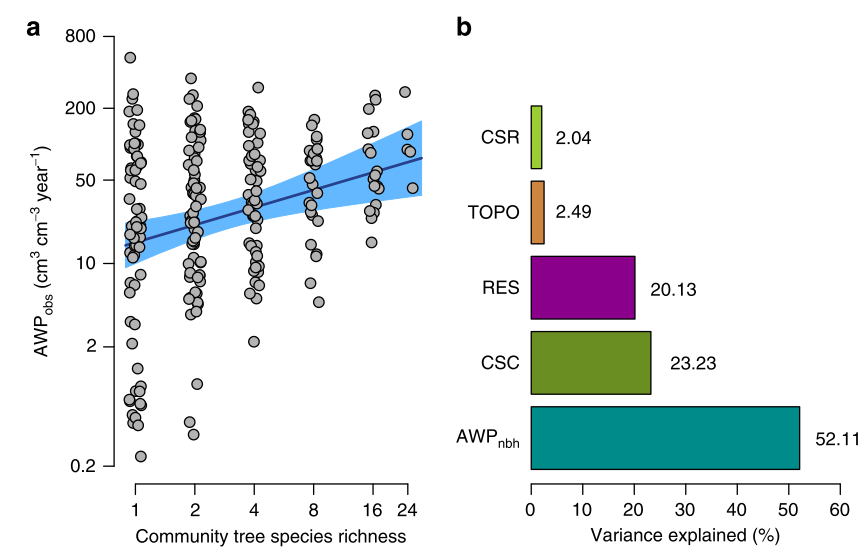Abstract:
Theory suggests that plant interactions at the neighbourhood scale play a fundamental role in regulating biodiversity–productivity relationships (BPRs) in tree communities. However, empirical evidence of this prediction is rare, as little is known about how neighbourhood interactions scale up to influence community BPRs. Here, using a biodiversity–ecosystem functioning experiment, we provide insights into processes underlying BPRs by demonstrating that diversity-mediated interactions among local neighbours are a strong regulator of productivity in species mixtures. Our results show that local neighbourhood interactions explain over half of the variation in observed community productivity along a diversity gradient. Overall, individual tree growth increased with neighbourhood species richness, leading to a positive BPR at the community scale. The importance of local-scale neighbourhood effects for regulating community productivity, however, distinctly increased with increasing community species richness. Preserving tree species diversity at the local neighbourhood scale, thus seems to be a promising way for promoting forest productivity.
Literature:
Andreas Fichtner*, Werner Härdtle, Helge Bruelheide, Matthias Kunz, Ying Li and Goddert von Oheimb. 2018. Neighbourhood interactions drive overyielding in mixed-species tree communities. Nature Communications. 9:1144. https://doi.org/10.1038/s41467-018-03529-w.

